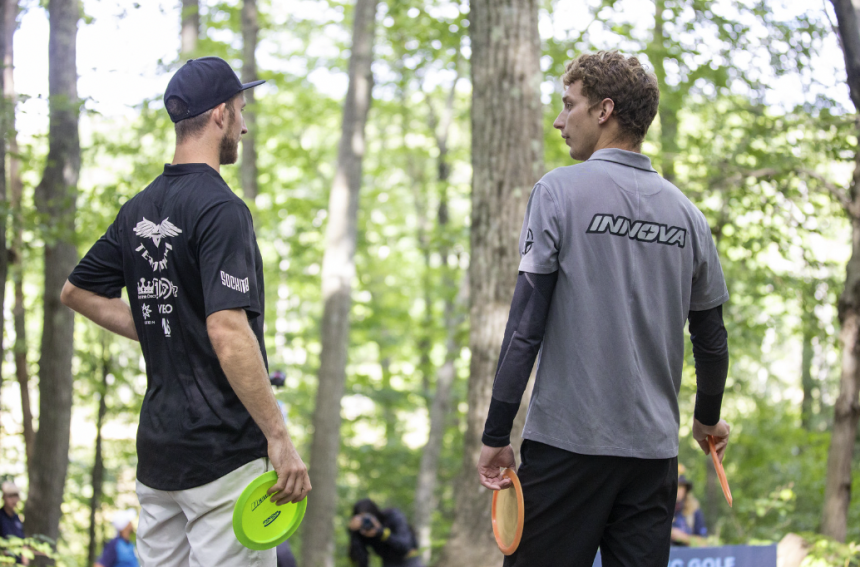<h1>The Old Guard Meets the New Wave: How Disc Golf's History and Tradition Coexist with Modern Trends</h1>
<h2>A Brief History of Disc Golf</h2>
Disc golf, also known as frisbee golf, has its roots in the 1960s when a group of friends in California began playing a makeshift game using Frisbees and trees as targets. The first official course was established in 1964, and the sport quickly gained popularity across the United States. As the game grew, so did its infrastructure, with dedicated courses and organizations emerging to promote and govern the sport.
<h3>The Old Guard: Traditional Disc Golf Culture</h3>
Throughout its early years, disc golf was largely shaped by a group of enthusiasts who were passionate about the sport. These pioneers, often referred to as the "old guard," were responsible for establishing the first courses, developing the rules and regulations, and promoting the game to new players. They were dedicated to the sport, often sacrificing time and resources to build and maintain courses, and many became influential figures in the disc golf community.
One of the most iconic figures from this era is Dave Dunipace, known as the "father of disc golf." Dunipace was instrumental in the development of the first professional disc golf tournament, the World Frisbee Disc Golf Championship, held in 1969. His contributions to the sport went beyond the tournament, as he also designed and built many of the early courses, including the famous Muny course in St. Louis, Missouri.
<h4>The New Wave: Modern Trends in Disc Golf</h4>
In recent years, disc golf has experienced a surge in popularity, with new courses and players emerging at an unprecedented rate. This new wave of enthusiasm has brought with it a fresh set of ideas and innovations, which have transformed the sport in exciting ways.
One of the most significant changes has been the rise of professional disc golf. In the early days, professional players were few and far between, but today there are hundreds of professional disc golfers competing in events around the world. This increased level of competition has driven innovation, with manufacturers developing new products and designs to meet the demands of top players.
Another trend that has gained momentum is the growth of disc golf's digital presence. With the rise of social media and online platforms, it's easier than ever for players to connect with one another, share their experiences, and follow the sport. This increased visibility has helped to attract new players and grow the sport's global reach.
<h5>Coexisting with Tradition</h5>
While the new wave of innovation and enthusiasm has brought exciting changes to the sport, it's essential to remember the importance of tradition and history. The old guard, who worked tirelessly to establish and grow the sport, deserve recognition and respect for their contributions.
One way that tradition and modernity coexist is through the preservation of classic courses and the introduction of new designs. Many of the original courses, such as the Muny, are still in operation today, offering a glimpse into the sport's rich history. At the same time, new courses are being designed and built, incorporating innovative features and challenges that cater to the demands of modern players.
<h6>A Harmonious Balance</h6>
The coexistence of tradition and modernity in disc golf is not without its challenges. However, by embracing the history and culture of the sport, while also embracing the innovations and changes that the new wave brings, we can create a harmonious balance that benefits everyone.
In conclusion, the story of disc golf is one of tradition and innovation, with the old guard and the new wave working together to shape the sport we know and love today. As the sport continues to evolve, it's essential to remember the importance of respecting and honoring its history, while also embracing the exciting changes that the future holds.
<h2>FAQs</h2>
<h3>What is the difference between traditional disc golf and modern disc golf?</h3>
Traditional disc golf is characterized by its emphasis on skill, strategy, and self-reliance, whereas modern disc golf has a greater focus on competition, technology, and community engagement.
<h3>How has the rise of professional disc golf affected the sport?</h3>
The rise of professional disc golf has driven innovation, increased competition, and raised the profile of the sport. It has also created new opportunities for players and entrepreneurs, but also presents challenges for traditional courses and local players.
<h3>What role do social media and online platforms play in disc golf?</h3>
Social media and online platforms have revolutionized the way we connect with one another and follow the sport. They provide a means for players to share their experiences, connect with other players, and stay up-to-date with the latest news and trends.
<h3>How can we balance tradition and modernity in disc golf?</h3>
By embracing both the history and culture of the sport, while also embracing the innovations and changes that the new wave brings, we can create a harmonious balance that benefits everyone. This can be achieved through the preservation of classic courses, the introduction of new designs, and the promotion of community engagement and inclusivity.The Old Guard Meets the New Wave: How Disc Golf’s History and Tradition Coexist with Modern Trends

Leave a comment







